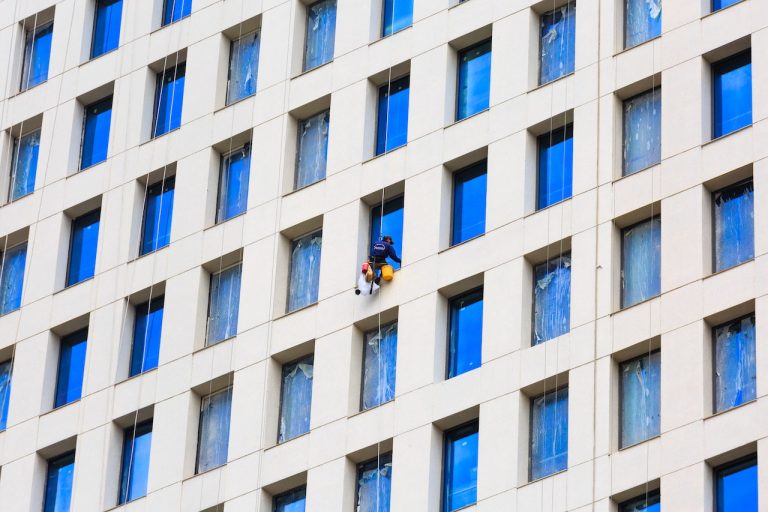Table of Contents
Steam cleaning is one of the most popular carpet cleaning methods today and for good reason. It restores carpets to a fresh, like-new condition that dry cleaning alone can’t achieve.
Hiring a professional for steam cleaning ensures a deep, thorough clean. But for those who prefer DIY, steam cleaning machines are now more affordable and widely available. You can purchase one or conveniently rent a machine from many retail stores.
For larger homes, buying a steam cleaner can be more practical than renting. It allows you to clean one room at a time, making the process easier and more manageable without rushing through the entire house.
Why Break Carpet Steam Cleaning Into Sections?
Dividing carpet steam cleaning into sections ensures the best results. Cleaning smaller areas prevents streaks and uneven drying, while letting you focus on spots that need extra attention.
This approach also helps monitor drying progress, ensuring the carpet dries evenly. Especially in larger rooms, tackling one section at a time makes the process more manageable and delivers a consistently fresh, clean carpet.
Unlike generic rental machines, owning a steam cleaner gives you more control over performance and results. With a wide range of models available, you’re more likely to find one that suits your home perfectly making buying a smarter long-term investment than renting.
Stores like Bunnings offer a variety of high-quality steam cleaners and compatible cleaning products, allowing for better results than standard rental machines.
For an even deeper clean, some companies sell professional-grade carpet steam cleaners to homeowners. These machines cover more area quickly and provide stronger suction, delivering a superior clean. While more expensive, the investment pays off with fresher, longer-lasting carpets.
Understanding the Functions of a Advantages of Carpet Steam Cleaning
The carpet steam cleaner and vacuum cleaner are two separate washing devices with different applications for the hardest cleaning jobs. As a result, use the right machines to conserve time money on the carpets.
When it comes to commercial and factory carpet washing, a carpet steam cleaner is undoubtedly a formidable cleaning gadget. These units have the tough cleaning capacity to perform even the most demanding cleaning work.
Unfortunately, a vacuum cleaner and a carpet steam washing unit are often mistaken. Both of these devices are excellent cleaners in their own right, but they are two somewhat different machines.
It’s important to consider the variations between these two devices while searching for a carpet cleaning unit. Certain styles of carpeting can be compromised if you pick the wrong one. Investing in the right one could result in cleaner, longer-lasting carpets.

The Importance of Pre-Vacuuming Before Steam Cleaning
Before diving into steam cleaning, there’s one step you shouldn’t skip: pre-vacuuming. Think of it as prepping the canvas before painting it sets the stage for a more effective clean.
- Prevents Dirt from Embedding: Vacuuming first removes loose dust and debris, so the steam cleaner doesn’t push them deeper into the fibres.
- Boosts Cleaning Efficiency: With dry soil gone, the machine can focus on tougher stains and grime.
- Delivers Better Results: A pre-vacuumed carpet simply looks fresher and cleaner.
It also protects your equipment picking up items like paperclips or crumbs beforehand reduces the risk of clogs or damage. Plus, it’s the perfect time to spot problem areas, from coffee stains to pet mishaps, so you can target them during cleaning.
A quick vacuum upfront makes all the difference for both your carpet and your machine.
Steam Cleaning Benefits for Allergy and Sensitivity Sufferers
For households dealing with allergies or sensitivities to scents, steam cleaning offers a major advantage. Since steam cleaners operate using only water heated to high temperatures, they don’t leave behind any lingering fragrances or chemical residues. Instead, the hot vapor penetrates deep into carpet fibers, lifting out dust, pollen, and other allergens, along with stubborn dirt.
By relying solely on heat and moisture, steam cleaning also neutralizes bacteria and helps remove sources of unpleasant odors without introducing new irritants into your home. This makes it an ideal solution for anyone looking to maintain a fresher, healthier environment especially for those particularly sensitive to traditional cleaning products or perfumes.
The Steam Makes a Difference
It’s all too quick to mix up a carpet steam cleaner and a dry cleaning. After all, both of these machines use steam in any capacity and will clean carpets. However, it’s important to understand the differences between these two machines.
Disadvantages of Dry Carpet Cleaning
Dry carpet cleaning is quick and convenient, but it has drawbacks:
- Shallow Cleaning: It rarely penetrates deep into fibers, leaving behind stubborn dirt, odors, and stains.
- Chemical Residues: Powders or compounds may linger, attracting dust faster and sometimes irritating children, pets, or allergy sufferers.
- Faster Wear: Residue buildup can dull fibers over time, reducing carpet longevity.
While dry cleaning works for surface refreshes, it can’t match the deep, long-lasting results of hot water or steam-based methods.
Hot Water Extraction (Often Called Steam Cleaning):
These machines use hot water up to 210°F mixed with detergent to loosen sticky residues and ground-in soil. With strong extraction power, they lift dirt out effectively, making them excellent for stubborn stains.
True Steam Cleaners (Steam Vacuums):
Unlike hot water extractors, steam vacuums generate superheated steam (up to 386°F) to dissolve tough deposits and sanitize surfaces. They excel at killing germs but don’t always provide the same deep fiber-cleaning power as hot water extraction.
Steam Cleaning and Allergy Relief
For those sensitive to dust, pollen, or pet dander, steam cleaning can be a real lifesaver. By penetrating deep within the carpet fibers, a steam cleaner tackles hidden allergens and dust mites that regular vacuuming can leave behind. The heat from the steam not only loosens stubborn particles but can also help neutralize many of the common irritants that trigger allergies.
As a result, allergy sufferers often experience fewer symptoms like itchy eyes or sneezing after a thorough steam cleaning session. This deep-cleaning method contributes to a noticeably fresher indoor environment, making it a smart option for households wanting cleaner air and healthier carpets.
Common Carpet Stain Challenges
Carpets inevitably bear the brunt of everyday mishaps, from spilled wine to kids’ slime experiments. Each type of stain behaves differently, requiring the right approach for best results:
- Ink: Quickly embeds in fibers and spreads easily. Needs careful treatment to avoid worsening.
- Coffee: Soaks in fast; if untreated, leaves stubborn brown rings.
- Grease & Oil: Repel water, attract dirt, and demand special degreasers.
- Slime: Glue and dyes cling tightly; removal risks damaging fibers.
- Nail Polish: Hard, glossy finish that may need solvents but can risk carpet color.
- Candle Wax: Solidifies in fibers; requires gentle reheating to lift out safely.
- Red Wine: Tannins and dyes stain deeply fast blotting is key.
- Pet Accidents: Can seep into padding and linger; enzymatic cleaners are essential.
Each stain has its own solution using the wrong cleaner can set it permanently. The right method, applied quickly, keeps your carpet fresh and lasting longer.
Potential Residue and Allergy Concerns with Dry Carpet Cleaning
Dry carpet cleaning relies on chemical compounds that may leave behind residues, even after vacuuming. For families with young children or those sensitive to chemicals, this can be a concern since carpets are often touched or played on daily.
These residues not only attract dirt faster leading to quicker re-soiling and premature carpet wear but may also trigger allergic reactions or sensitivities, especially when fragrances are added. While regular vacuuming helps, dry methods generally carry a higher risk of residue compared to wet extraction, which rinses solutions more thoroughly.
Store-Bought and Diy Dry Carpet Cleaning Solutions
When renting a steam cleaner isn’t practical, dry carpet cleaning offers quick alternatives. Store-bought powders (like those from Bunnings) are sprinkled, brushed in, left to settle, and vacuumed great for lifting dirt and odours without excess moisture.
For a DIY option, mix baking soda (odour removal), cornstarch (residue lifting), and borax (deep clean). Add cinnamon or bay leaves for a fresh scent, scatter over the carpet, let sit 15 minutes, then vacuum.
Both methods are ideal for spot treatments or high-traffic areas, with minimal downtime.
How Dry Carpet Cleaning Works
Dry carpet cleaning uses minimal moisture, making it ideal for water-sensitive carpets or spaces that need fast turnaround. A cleaning powder is sprinkled onto the carpet, then brushed in with rotating brushes. The compound loosens dirt and stains while absorbing oils, which are later removed with a vacuum leaving carpets fresh and dry in as little as 30 minutes.
Ready-made powders (found in most supermarkets) work well for routine or spot cleaning in high-traffic zones. Alternatively, DIY blends of baking soda, borax, and cornstarch can absorb odours and grime just sprinkle, wait, and vacuum. Adding cinnamon or dried herbs leaves a light, pleasant scent.
In essence, dry cleaning is a quick, convenient option for regular maintenance without long drying times.
Why Consider Dry Carpet Cleaning?
Steam cleaning is thorough, but dry carpet cleaning shines when speed and convenience matter. Using low-moisture powders or compounds brushed into the fibers, dirt and oils are lifted and then vacuumed away leaving carpets fresh without excess water.
Key Benefits:
- Fast Drying: Carpets are ready in under an hour, perfect for busy homes or high-traffic areas.
- Safe for Delicate Carpets: No risk of shrinkage, water damage, or prolonged dampness.
- Quick Spot Treatments: Great for routine upkeep or tackling small problem areas.
- Residue-Free: Designed to lift soil without leaving behind sticky traces.
- DIY-Friendly: Easy to apply with supermarket products or homemade blends like baking soda, borax, and cornstarch.
For moisture-sensitive flooring or situations where downtime isn’t an option, dry carpet cleaning is a practical, reliable choice.
Water Flow Considerations for Carpet Steam Cleaners
When choosing a carpet steam cleaner, pay attention to water usage. Traditional machines often use a lot of water, leaving carpets very wet and prolonging drying times creating a potential breeding ground for germs.
Machines with low water flow technology focus on suction and extraction rather than excess water, helping carpets dry faster and more efficiently. This is especially useful in wet climates, for upholstery cleaning, or when tackling stubborn stains, reducing downtime and improving cleaning results.
Why Avoid Adding Chemicals to the Extraction Tank?
Carpet cleaning professionals usually avoid adding chemicals directly to the hot water tank of an extraction machine to prevent residue from being left behind.
Leftover chemicals can make carpets attract dirt faster, causing them to get dirty again soon after cleaning. By applying cleaning agents to the carpet first and then rinsing with clean water, you achieve a deeper clean without sticky residue.
This method keeps carpets cleaner for longer and is especially important for homes with children, pets, or allergy sufferers, as it reduces potential irritants and lingering odors.
Next, we’ll look at the key elements that make a carpet cleaning machine effective.
Importance of Risk Assessment Before Steam Cleaning
Before diving into steam cleaning your carpets, it’s essential to carry out a thorough risk assessment. Why is this step so crucial? By evaluating the site first, you identify any potential hazards that could affect both the cleaning process and the safety of everyone involved. For example, pinpointing locations of power outlets, fire extinguishers, and emergency exits means cleaners can act swiftly and safely should any incident arise.
A risk assessment also helps cleaners familiarise themselves with the unique layout and features of the premises. This preparation ensures that equipment is used correctly and efficiently, reducing the chance of accidents and preventing any unintended damage to fixtures or sensitive carpeted areas.
Ultimately, this up-front diligence provides peace of mind, enabling the cleaning team to work confidently and methodically delivering a thorough, professional result without unnecessary risks or interruptions.
How Does the Right Carpet Cleaner Work?
“Steam carpet cleaners,” “carpet steam cleaners,” and also “steam cleaners” are all words used to define carpet cleaners. True steam cleaners operate with dry vapour steam, which is useless for carpet cleaning in general or for deep cleaning too.
A carpet cleaner, also known as a carpet extractor or carpet shampooer, is a system that cleans carpets and rug cleaning by removing deeply rooted soil and stains. The computers operate in the following manner for best results:
The carpet is pretreated by covering it with a cleaning solvent before enabling it to sink in for around 15 minutes. The carpet cleaner, which pipes water onto the carpet and removes the dusty, soapy solvent with a high-powered vacuum, is then used by the operators. Some units include elements that heat the rinse water, whereas others do not.

Cleaning Carpets Without a Machine
No machine? No problem. You can still freshen up your carpets using simple household ingredients.
A DIY cleaning powder made from baking soda, borax, and cornstarch helps lift dirt, absorb moisture, and neutralize odors. For a pleasant scent, add a pinch of cinnamon or crushed bay leaves.
How to use:
- Sprinkle the mixture lightly over the carpet.
- Let it sit for 15–30 minutes.
- Vacuum thoroughly to remove the powder and trapped dirt.
This quick, low-effort method is perfect for in-between deep cleans and the best part is, you probably already have the ingredients in your pantry.
Important Elements of a Carpet Steam Cleaner
Pump:
The pump creates the pressure that injects water into the carpet, typically ranging from 60 to 500 psi.
Vacuum:
The vacuum removes dirty water and cleaning solution from the carpet into a separate tank. Vacuums come in various motor setups single 2-stage, dual 3-stage, or triple 2-stage but a motor with at least two stages is recommended for best results.
Vacuum performance is measured by airflow (cubic feet per minute, or CFM) and water lift (inches). Airflow, usually 100–200+ CFM, measures the amount of air passing through the system, while water lift, often 100–250+ inches, measures suction power. Both are crucial for an effective clean.
Tanks for Solution:
The rinse water is stored in these containers. Solution tanks usually vary in size from 4.5 to 17 gallons.
Tanks for Recuperation:
Extracted mud, washing agents, and water are stored in these containers. Recovery tanks usually vary in size from 4.5 to 15 gallons.
Heating System:
In as little as three minutes, this part heats the rinse water to temperatures as high as 210 F. Single tank-heating versions, which heat water in the solution tank, to double inline heating elements, which heat water when it leaves the machine, are examples of heating elements.
Accessorize with:
A large floor wand is typically included with carpet cleaners. The wand’s diameter varies between 10 and 12 inches, and it has one or two jets for dispensing and collecting fluids. Upholstery and stair wands may be added as extras. Hoses for vacuuming and cleaning solutions are available in a range of lengths, as well as custom lengths.
A 5-Step Steam Cleaning Procedure, having an environmentally sustainable carpet cleaning service that is healthy for children and pets.
If you vacuum the carpets yourself or hire a professional to do so, it’s a good idea to get them professionally washed at least twice a year to prevent dirt and germs from accumulating in your house.
Carpets are often the most undervalued flooring choice in our homes. Those carpets, on the other side, would be front and centre for prospective customers when it is time to sell our house.
Creating a Child-Friendly, Spotless Nursery
Keeping nursery carpets clean doesn’t have to be overwhelming. Choose a soft yet durable carpet that’s comfy for crawling but tough enough for spills and play. Pair it with a quality water- and stain-resistant underlay (foam with moisture barriers or eco-friendly recycled rubber) to protect against accidents.
Vacuum regularly, especially in play zones, to reduce crumbs and allergens, and schedule professional deep cleaning every six months for a germ-free refresh. When spills happen, blot immediately and use a gentle carpet-safe cleaner to stop stains from setting.
With the right upkeep and protection, your nursery stays clean, safe, and welcoming perfect for years of little adventures.
Enjoy the luxury of a spotless home without the effort! Book your appointment today and experience instant freshness.




